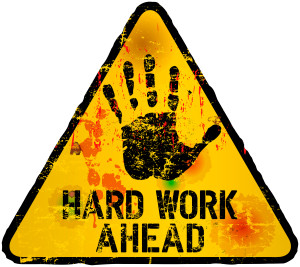
Back in 2010, Professor Dan Willingham launched a movement with his now-classic book Why Don’t Students Like School?
In that book — one of the first to make cognitive science clear and practical for classroom teachers — Willingham wrote this immortal sentence: “Memory is the residue of thought.”
In other words: if we want students to learn something — and we do! — we need to make them think hard about it.
When I first read that sentence, it sounded almost too obvious to write down … until I recalled all the things that we (and I) do that DON’T require students to think about the topic we want them to learn.
Once we take this insight onboard, all sorts of other ideas start making more sense.
For instance: why is retrieval practice better at creating long-term memories than simple review?
Well, because students have to think harder when they retrieve than when they review. And because they think harder, they remember more. (“Memory is the residue of thought.”)
Simply put: we teachers strive to foster as much focused, hard thought as possible.
Voila — teaching made easy!
Not So Fast…
This core advice offers such practical insights: what could possibly be the problem?
Well, imagine this hypothetical:
If our students believe that fruits and vegetables are bad for their health, they face two compelling reasons not to eat ’em:
- vegetables taste bad (I’m sorry, I don’t get kale), and
- vegetable are bad for health.
That second belief might be wrong. But if the students believe it, it will influence their thinking and behavior.
Let’s translate this hypothetical to classrooms.
If our students believe that hard thinking is proof that they didn’t learn, they face two compelling reasons not to think hard:
- thinking hard is unpleasant, and
- thinking hard is proof that students don’t get the concept.
Now, you and I know that this second belief is false. Hard thinking is NOT proof that students don’t get the concept; it is — quite the contrary — an essential step on the way to getting the concept.
Hard thinking is — as the technology people say — not a bug; it’s a feature.
For these reasons, we really want to know: do our students hold this false belief? Do they think that hard thinking is both unpleasant and a sign of cognitive ineffectiveness?
In a word: yup.
Let’s Get Technical
A recent meta-analysis looks at precisely this question.
In the highly technical language of research, they conclude:
“The amount of mental effort experienced during a learning task is usually negatively correlated with learners’ perception of learning.”
In other words: just as we feared, students (on average) perceive mental effort to be unpleasant AND a sign that they’re not learning.
In other words:
“If a learner judges their perceived mental effort to be high, they will judge their perceived learning…as low.”
In 1984, this situation would be described as “double-plus-un-good.”
As is usually the case, the methodology for this meta-analysis involves technical yada-yada that’s more complicated than is worth exploring. But those headlines should be clear enough to get our teacherly attention.
Translating Research for the Classroom
What should school people do with this information?
I’ve got three suggestions:
First:
“Just tell them.” *
That is:
- Specifically say to students that, although it seems PLAUSIBLE that hard thought is a sign of academic failure,
- Hard mental work actually helps them learn.
This truth feels obvious to adults, but is counter-intuitive to younger learners.
Of course, we will need to make this point over and over. I regularly say to my students: “That feeling in your head right now…that feeling ‘this is really complicated!’ … that feeling is you learning the concept.”
Second:
Explain to students — in an age appropriate way — that research supports this claim.
For instance:
You could ask your students: “which is more difficult: a) trying to remember information, or b) rereading it?”
You can then show them LOTS O’ RESEARCH showing that trying to remember — a.k.a. “retrieval practice” — is MUCH more beneficial for learning.
Third:
Depending on the student, an analogy might be helpful: specifically a sports or arts analogy.
In my experience, most students accept without question that sports and arts require repetitious hard work.
- If you want to get better at your dance steps, repeat your dance steps
- If you’re bad at hitting 3-point shots, practice 3 point shots
- If you hope to feel more natural with the blocking at the top of act II, you know what to do.
In every case, the need for all this hard work isn’t a sign that you can’t dance/score/act; instead, it’s a perfectly normal part of getting better at dancing, scoring, and acting.
By the way, I should probably include a fourth strategy:
“You will know what works best for you and your students.”
As is so often the case when translating research for the classroom, the teacher’s perspective often provides the best ideas.
Once you and your classroom colleagues know that students mis-interpret hard thought to be a bad thing, you will start coming up with the solutions likeliest to update this misconception.
Research can help us spot problems; we teachers are often even better at developing effective solutions.
* Yes, I’m slyly quoting the title of my friend Zach Groshell’s book.
David, L., Biwer, F., Baars, M., Wijnia, L., Paas, F., & De Bruin, A. (2024). The relation between perceived mental effort, monitoring judgments, and learning outcomes: A meta-analysis. Educational Psychology Review, 36(3), 66.





